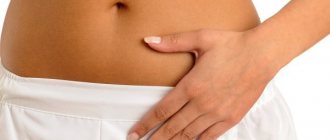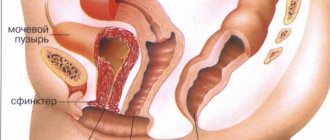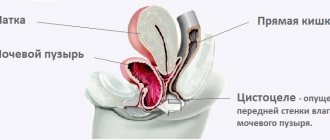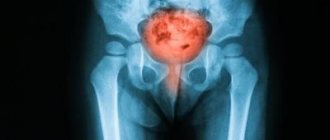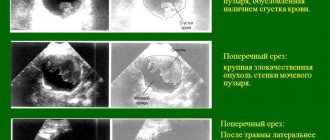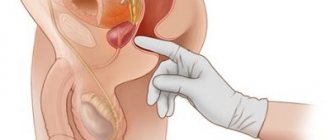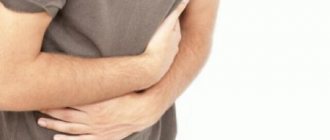Every second woman has suffered an episode of cystitis at least once in her life. Many suffer from a chronic form of this disease, so the search for treatment methods is an urgent request. Doctors offer antibiotic therapy, friends talk about traditional medicine. You can choose the right way to get rid of inflammation only after a detailed study of the problem.
general information
Inflammation of the bladder in women, otherwise called cystitis, is one of the most common diseases of the urological tract.
It causes a lot of inconvenience. Men encounter this disease much less frequently, since the structure of their urinary tract is somewhat different.
Cystitis requires immediate qualified treatment. Otherwise, the risk of complications increases significantly. Drug therapy should be prescribed exclusively by a doctor. The thing is that improper treatment can only worsen the situation. The inflammatory process itself, as a rule, forms directly in the mucous membrane. According to experts, this disease can be diagnosed at absolutely any age, regardless of a person’s lifestyle and associated hereditary factors.
According to available statistics, every third woman of reproductive age has to deal with a problem such as inflammation of the genitourinary system at least once in her life. In half of this number, the disease becomes chronic and then recurs almost every year.
It is believed that the incidence rate in young and elderly people is approximately the same. Experts explain this fact by the peculiarities of the anatomical structure of the female body (wide urethra, proximity of the anus to the vagina) and physiology (disturbances at the hormonal level lead to changes in the microflora of the vagina, from where pathogenic organisms easily penetrate into the bladder itself).
Treatment of bladder inflammation
In women, the treatment of acute cystitis differs from that prescribed for the chronic course of the pathological process. This is explained by the peculiarities of the anatomical structure of the organs of the urinary system, and the presence of certain factors and pathogenic microflora present in the urinary tract.
Nutrition and diet
If you have cystitis, it is important to follow the nutritional rules developed by your doctor. They are usually based on:
- eating foods that have a diuretic effect;
- eliminating or reducing the dose of salt consumed per day;
- avoiding spicy foods;
- reducing the amount of protein food consumed;
- complete rejection of fats;
- eliminating sugar and its substitutes from the diet.
It is worth considering that the diet menu should not cause constipation. You should also pay attention to the method of cooking: it is better to steam or boil the food. Smoking, frying, and salting are strictly prohibited.
An aggravated disease causes a lot of trouble and inconvenience. Typically, the duration of symptoms does not exceed 7 days, but during these days it is necessary that the diet be especially strict. It is important to ensure complete rinsing of the urinary tract in order to quickly remove the causative agent from the body.
You need to drink 2–2.5 liters of liquid per day. This can be plain or sodium chloride water, dried fruit compote without sugar, homemade fresh juices. Pumpkin juice has diuretic properties, and fruit drinks made from lingonberries or cranberries have anti-inflammatory properties.
Based on the previously discussed aspects of the diet, you can easily create a menu yourself. For breakfast it is recommended to eat porridge from any type of cereal, for lunch - vegetable soup, salad with vegetable oil dressing or steamed meat dishes. Dinner is light, vegetable or fruit.
Main reasons
In women, cystitis most often develops along an ascending path. Microorganisms enter through the urethra. This may be due to hypothermia, failure to comply with basic hygiene rules, or the presence of vaginitis.
In young children and elderly women, urine enters the so-called vestibule of the vagina, causing irritation of the mucous membrane in this area. Then pathogenic flora joins this process, provoking inflammation, which very quickly transfers to the organs of the urinary system.
In children from two years of age to the end of adolescence, changes at the hormonal level are not uncommon. As a result, the rod flora is converted into coccal flora, which causes inflammation of the vagina, and then the bladder itself.
Already at the so-called reproductive age (from 18 to approximately 45 years), the causes of cystitis can be very different, from promiscuity to neglect of personal hygiene.
Inflammation of the genitourinary system can also appear as a result of certain diseases, for example, urethritis or pyelonephritis. In addition, instrumental examination of internal organs in urology also sometimes leads to the development of this problem. Stones in the bladder play a certain role in the occurrence of the disease. They constantly irritate the mucous membrane, then pathological flora joins this process. All this causes cystitis. Its causative agents, according to experts, are bacteria (less commonly fungi, protozoa and various viruses).
In addition to infection, doctors identify a number of factors that contribute to the development of the inflammatory process, namely:
- hypothermia;
- disturbances at the hormonal level;
- untimely emptying of the bladder;
- indiscriminate sexual contacts;
- failure to comply with basic hygiene rules (especially during menstruation);
- frequent constipation;
- decreased immunity;
- improper wiping after bowel movements.
Drug treatment
How long to treat? Adequate therapy will allow you to get rid of the disease within a week. The main question is how quickly you can relieve pain. For this purpose, antispasmodics and non-steroidal anti-inflammatory drugs (papaverine, diclofenac, nemisil) are used.
When the infectious origin of the disease is confirmed, medications are designed to destroy pathogenic microflora. For this purpose, antibiotics and antimicrobial agents are used.
If specific microflora is detected, antiviral and antifungal drugs are included in therapy. With long-term therapy, it is necessary to change uroseptics every 7-10 days.
Many bacteria adapt to antimicrobial drugs, which significantly reduces the effectiveness of therapy. Therefore, it is important to know not only how to treat cystitis, but also which remedies are not very effective:
- furagin, furadonin - more suitable for preventive purposes;
- ampicillin – in 30% of cases, E. coli is insensitive to this antibiotic;
- Biseptol is ineffective, bacteria have developed a strong defense against this drug;
- Cefradine, cephalexin - medications belong to the first generation of cephalosporins and have many side effects.
Antibiotics
How to quickly cure cystitis? For this purpose, there is a broad-spectrum antibiotic - monural. The drug is a uroantiseptic; to cure it, it is enough to take the drug once.
- Nitroxoline (5NOK) is an antibiotic used to treat infectious diseases of the urinary tract. The tablets are inexpensive, but they help against many diseases - pyelonephritis, urethritis.
- Papin is an antibiotic, antimicrobial drug. The tablets are effectively used to destroy infections whose pathogens are sensitive to pipemidic acid.
- Metronidazole (Trichopolum) is a broad-spectrum antibiotic in the form of tablets, suppositories, and solution for intravenous injection.
Fluoroquinol antibiotics are often used for treatment:
- ciproflaxin - tsifran;
- norfloxacin – nolitsin;
- fosfomycin - monural.
All of these drugs have pronounced side effects and a number of contraindications, so only a specialist can prescribe them. To quickly eliminate symptoms, antibiotics can be prescribed in the form of injections. The most effective remedy that is used even to treat cystitis in children is chloramphenicol.
Antibacterial drugs with a minimum number of side reactions are intended for children and pregnant women - amoxicillin clavulanate.
Candles
Candles (suppositories) help relieve acute manifestations of cystitis and inhibit the development of pathogenic microbes. Can be for rectal and vaginal use.
Candles name:
- polygynax - vaginal suppositories with a wide spectrum of action, destroy almost all types of pathogenic microflora;
- hexicon (pimafucin, diflucan) – antiseptic, effective at the initial stage of the disease, protects against sexually transmitted infections;
- betin - suppositories with antiseptic, disinfectant, antibacterial effects, used to treat cystitis in the acute stage;
- methyluracil - promotes the production of red blood cells, leukocytes, promotes tissue regeneration, is effective against bacterial cystitis.
Herbal preparations
What to take for uncomplicated forms of cystitis? Herbal medicines are used in the absence of fever, pain and complications.
- Cyston is a drug based on extracts of many diuretic, anti-inflammatory, antimicrobial plants. Helps the body absorb antibiotics faster, reduces inflammation, and dissolves kidney stones.
- Monurel is a highly concentrated cranberry extract.
- Canephron - tablets for the treatment of cystitis based on rosemary, lovage, centaury. Helps reduce cuts and pain. It has no side effects and can be combined with antimicrobial drugs.
Important! Cranberry is the most important remedy in the treatment of cystitis. Drinking 300 ml of cranberry juice a day can reduce the number of relapses and speed up the recovery process.
How to treat cystitis quickly? Complex therapy of antibacterial and natural remedies allows you to achieve noticeable results and long-term remission.
Treatment at home
Even with an acute course of the disease, you can quickly recover from cystitis at home. The best remedy for a quick recovery is bed rest, proper nutrition, and compliance with the doctor’s instructions.
There is a misconception that a heating pad should be applied to a sore spot. It is strictly forbidden to heat. Cystitis is a bacterial disease. Any heat will contribute to the rapid growth of pathological microorganisms, and the infection will begin to spread to other organs.
Important! If you follow a dietary regime, you can speed up the healing process several times.
Active work in the kidneys occurs in the morning and during the day, so during the treatment of cystitis, all high-calorie foods should be consumed in the first half of the day. Dinner should be light.
Symptoms
As a rule, the clinical picture is the same in women of different ages. Symptoms persist for 10-12 days, after which, with treatment, complete recovery occurs. If the signs of cystitis do not disappear after 14 days, most likely the disease has become chronic. Below we list the main symptoms of the disease:
- frequent urge to urinate;
- pain and discomfort in the lower abdomen;
- burning in the genital area;
- urinary incontinence;
- slight increase in temperature (up to 37 degrees);
- cloudy urine.
If the above problems occur, it is recommended to immediately seek advice from a specialist. It is important to remember that inflammation of the bladder in women always requires proper therapy. Otherwise, the risk of complications increases several times.
First aid for exacerbation of cystitis
Every woman has had to deal with the symptoms of cystitis; even schoolgirls are susceptible to the disease.
At the first signs of cystitis, the help of a urologist is necessary. If this is not possible, it is necessary to provide adequate first aid to alleviate the patient’s condition. (For more information about which doctor treats cystitis, read our article).
- To eliminate pain, you can take painkillers that eliminate spasms (no-spa, nurofen, ketanol).
- Drink plenty of fluids, more than 2 liters per day. This will help flush out the infection. You can consume not only water, but also berry fruit drinks. Avoid coffee, strong tea, carbonated drinks, juice from tomatoes and citrus fruits.
- You can make a decoction of antibacterial, anti-inflammatory herbs. You can use chamomile, calendula, St. John's wort, and nettle. The medicine is prepared from 230 ml of boiling water and 12 g of raw materials.
- Rest and bed rest. Eliminate everything fatty, salty, spicy.
Classification
It is noteworthy that there is no uniform classification of this disease. Experts call only two stages of the disease depending on the time of its onset - acute and chronic.
Inflammation is classified as an acute pathology if it occurs once. Chronic cystitis is secondary. It appears due to the spread of infection in the body. Its manifestations are less pronounced and are not accompanied by an increase in temperature. Exacerbations are possible, the frequency of which depends simultaneously on several factors (the state of the immune system, the presence of other gynecological diseases). Vitamin deficiency, constant overwork, exhaustion of the body - all this contributes to the development of a disease such as chronic inflammation of the bladder. Treatment in this case requires a more competent approach.
"Honeymoon Cystitis"
Modern medicine identifies such a disease as “honeymoon cystitis.” How is it different? In fact, such a beautiful term implies the appearance of primary signs of the disease immediately after defloration.
Very often, even before a girl begins to be sexually active, changes occur in the microflora of her vagina. They are minor and do not cause concern. Almost every sexual intercourse is accompanied by the reflux of vaginal microflora directly into the urethra itself, as well as into the bladder. The walls of organs, as a rule, are not prepared for such an “attack,” which provokes the development of an inflammatory process, and with it cystitis. Primary signs of the disease appear within a couple of days. It is very rare for girls to refuse intimacy on their honeymoon, even despite inflammation of the bladder. Treatment is constantly delayed, and the disease only continues to progress.
Diagnostics
Bladder inflammation in women can only be confirmed after a complete examination. It involves urine analysis and bacteriological culture. The latter is necessary for the detection of opportunistic pathogens.
In addition, with this diagnosis, during palpation in the lower abdomen, the woman will feel pain, and of varying intensity. Ultrasound examination always confirms the presence of inflammation, which directly affects changes in the structure of the internal walls of the organ.
If the disease persists, the doctor may prescribe an additional examination (for example, a biopsy or cystoscopy). Using these methods, it is possible to definitively confirm a diagnosis such as inflammation of the bladder.
Treatment: tablets and other forms of drugs
First of all, a woman must undergo a full diagnostic examination, based on the results of which the doctor will prescribe drug therapy. It is recommended to avoid sexual intercourse for the entire duration of treatment in order to restore the vaginal microflora.
To relieve spasms and eliminate severe pain, doctors usually prescribe Urolesan or Canephron.
How to get rid of cystitis? If the disease is infectious, the prescription of antibiotics is considered necessary. Currently, the following are especially popular among antibacterial agents: “Monural”, “Co-trimoxazole”, “Nitrofurantoin”. As a rule, the duration of the course is from three to seven days.
The choice of antibiotics must be approached with special attention. This is why it is so important to seek help from a qualified specialist. The doctor recommends medications based on test results. The tests carried out make it possible to identify a whole group of microorganisms in the patient that are sensitive to a particular medication. It is important to note that modern antibacterial agents have virtually no toxic effect on the body, so they can be used without fear for such ailments as acute cystitis.
Treatment of the disease is impossible without the use of herbal diuretics, uroantiseptics and immunostimulants. You can speed up the healing process through physical therapy.
It is equally important to follow a special diet for a certain time, which prevents the development of an aggressive urine environment. It is necessary to exclude alcoholic beverages, pepper, mustard, horseradish, marinades and pickles from the daily diet.
Not the least role in treatment is given to the drinking regime. For example, it is recommended to consume at least two liters of liquid per day. This can be the most common still water, tea with honey, decoctions of parsley leaves, the so-called kidney tea. Drinking plenty of fluids helps flush out existing infections from the bladder more quickly.
Traditional treatment of cystitis in women should not be carried out without consulting a specialist. Of course, today you can find many recipes for alternative medicine that are designed to help in the fight against this disease. However, in some cases they do more harm than good.
Anti-inflammatory drugs
If the symptoms of the disease are accompanied by high fever, then anti-inflammatory drugs are prescribed to alleviate the condition. In addition to the effectiveness of these drugs, their mild effect on the body is noted. This type of funds includes:
- Indomethacin is a non-steroidal anti-inflammatory drug.
- has the property of anesthetizing and preventing possible swelling in the damaged area;
- prevents the connection of platelets, thereby preventing the formation of blood clots;
- excreted in full by the intestines and urine;
- Contraindicated for liver and kidney problems, problems with the gastrointestinal tract, and asthma.
- Diclofenac is a medicine that blocks the formation of enzymes that spread the inflammatory process.
- characterized by rapid pain relief;
- lowers the temperature in the damaged area;
- about thirty percent of the active substance is excreted through the intestines, the rest passes through the kidneys;
- prohibited for persons suffering from kidney and liver diseases, patients with bronchial asthma and digestive disorders.
- Piroxicam is a non-steroidal anti-inflammatory drug.
- relieves pain and fever;
- interferes with the process of thrombus formation;
- excreted mainly through the kidneys unchanged after about two days;
- not recommended for ulcer sufferers, people with gastrointestinal pathologies leading to bleeding, patients with severe renal and liver failure.
- Nimesulide is a substance that suppresses inflammatory processes, preventing their foci from spreading.
- relieves fever and pain;
- has an antiplatelet effect;
- more than half of the drug is excreted through the kidneys, the rest through bile;
- not used for renal pathologies, ulcers, acute liver diseases, not safe for children under twelve years of age.
- Ibuprofen is a popular remedy that has a wide range of uses, as it is recommended for the treatment of a wide variety of pathologies.
- selectively inhibits the activity of only those enzymes that promote inflammation;
- can be used as an analgesic;
- leaves the body through the intestines and urine;
- not compatible with pathologies such as intestinal inflammation, poor blood clotting, high sensitivity of the body, as well as renal failure.
Cystitis and pregnancy
If a woman already has this disease in the chronic stage, most likely, another exacerbation will occur during the period of bearing a child. During pregnancy, changes are observed in the body at the hormonal level, the usual microflora in the vagina is disrupted, immunity decreases - all these factors contribute to the exacerbation of cystitis.
Inflammation of the bladder in women expecting a child is important to treat under the supervision of a doctor. The thing is that in an interesting situation, many medicines are prohibited. A specialist can select those natural preparations (not to be confused with traditional medicine) that will be safe for the fetus.
Cystitis - symptoms in women with blood
The appearance of blood indicates either the development of an acute form or a hemorrhagic course. The color of urine varies from pinkish to dark brown. In the case of an acute course, blood appears at the end of urination, accompanied by sharp pain. If the patient has a hemorrhagic form, the urine immediately turns red, has a foul odor, and may be accompanied by whole clots. Discharge with cystitis appears during all acts of urination. The patient is bothered by an imperative urge to go to the toilet, discomfort in the abdomen, and temperature.
Pediatric cystitis
Inflammation of the bladder in a child is diagnosed very often for a number of reasons.
It is important to note that this disease is not associated with either gender or age. In girls, this disease is often explained by vaginal dysbiosis; in boys, it develops against the background of phimosis, but most often cystitis occurs occasionally after infection gets directly into the bladder itself. Treatment of the disease primarily involves competent diagnosis (general analysis and urine culture), which allows one to identify the pathogen and identify its characteristic properties. The disease in young patients very quickly spreads to the kidneys. That is why you should not delay treatment.
Alternative Treatments
Folk remedies help strengthen the body, eliminate foci of inflammation, and prevent pathogenic microorganisms from developing. Healers claim that there are natural recipes that help get rid of cystitis quickly and forever.
Important! For a quick cure, you need to eat 800 g of lingonberries at a time. After this, the disease subsides for a long time.
Treatment with millet
This method has been used by women to treat cystitis for many years.
- Pour millet (120 g) with cold water (230 ml). Stir and knead the grain with your hands. The liquid should take on a milky tint.
- The resulting liquid should be drunk throughout the day in 3 doses. In case of acute cystitis, you can increase the daily consumption of the drink by 2-3 times.
Duration of therapy is 1-2 weeks.
The best remedy
The disease disappears after one procedure.
- Pour boiling water (320 ml) over 35 g of dry cornflowers. Leave the infusion for half an hour, divide into two portions.
- Drink one portion in small sips throughout the evening. The second - after waking up.
A soda solution will help quickly relieve pain. 15 g of soda should be dissolved in 250 ml of warm water. The medicine should be taken within a quarter of an hour.
Decoction
Chamomile and coltsfoot are the best herbs for treating women's ailments.
- Boil 950 ml of water.
- Pour 40 g of chamomile and 10 g of coltsfoot into boiling water.
- Cook the broth under the lid over low heat for an hour.
- Filter the resulting medicine.
Drink 50 ml every half hour, add 10 ml of honey. Duration of treatment – 3 days.
St. John's wort
The plant contains ascorbic acid in large quantities. The infusion eliminates inflammation and has a hemostatic and diuretic effect.
Mix 45 g of St. John's wort and 15 g of chamomile, brew 900 ml of water. After an hour, filter the medicine. Drink 120 ml after each meal.
Sage
Due to the presence of essential oils and vitamins, sage products have a powerful antibacterial effect.
- Pour 240 ml of boiling water over 10 fresh leaves and simmer over low heat for 30 minutes.
- The medicine should be consumed chilled, strained, 55 ml three times a day.
- Continue treatment for at least 14 days.
Prevention
As you know, absolutely any disease is easier to prevent than to treat later. In the case of cystitis, this is also true. To prevent the development of this disease, all women are advised to adhere to fairly simple rules. What should you not do if you have cystitis?
- Have an uncontrolled sex life.
- Neglect basic rules of personal hygiene.
- Constantly being hypothermic.
- Neglect treatment of genitourinary tract infections.
- Use tight underwear made of synthetic fabrics.

